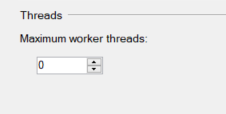Anyone who has used windows firewall, knows it is easier to create rules and configure, but hard to organize.
Though Windows Advanced Firewall interface shows a Group column, there is no easy way to set the group through UI.
In a recent task assigned to me, I wanted to organize my rules to several groups, that's when Powershell came in handy.
Let's say I have 5 rules I need to group. Currently they don't have a group.
I want to assign Rule 1, 2 and 3 to "My Group 1" and rule 4 and 5 to "My Group 2".
Get-NetFirewallRule -DisplayName 'My Rule 1' | ForEach { $_.Group = 'My Group 1'; Set-NetFirewallRule -InputObject $_ }
Get-NetFirewallRule -DisplayName 'My Rule 2' | ForEach { $_.Group = 'My Group 1'; Set-NetFirewallRule -InputObject $_ }
Get-NetFirewallRule -DisplayName 'My Rule 3' | ForEach { $_.Group = 'My Group 1'; Set-NetFirewallRule -InputObject $_ }
Get-NetFirewallRule -DisplayName 'My Rule 4' | ForEach { $_.Group = 'My Group 2'; Set-NetFirewallRule -InputObject $_ }
Get-NetFirewallRule -DisplayName 'My Rule 5' | ForEach { $_.Group = 'My Group 3'; Set-NetFirewallRule -InputObject $_ }
So in the firewall rule, first you fetch the firewall rule by using Get-NetFirewallRule cmdlet. Then for each result, you set the group to bying using $_.Group.
Result:





